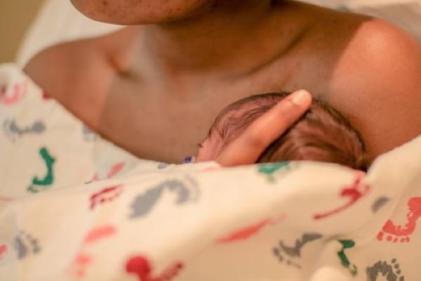
All babies are different. Some are fairly natural daytime sleepers and will sleep anywhere at any time; others like a very set routine in order to fall asleep easily; and others like to nap with Mummy or Daddy, and nothing else will do. If you have a baby that only sleeps in your arms for naps, then my advice is to ask yourself the following question: 'Am I happy with my baby napping on me?' Then check below for my suggestions.
“Yes I enjoy it...it gives me snuggle time...it’s easier...it suits my schedule...etc.”
If you’re enjoying it and your baby is content and taking good restorative naps, then there is no reason to change what you’re doing. Politely thank everyone for their advice, but explain to them that you’ve read up on your baby’s sleep needs and you’ve got it covered. Naps and night sleep are very different things, and holding Baby at nap time will not spoil his night sleep.
Most newborn babies love to nap in arms. As they start to wake up to the world, they may find it difficult to nap anywhere else without you putting in some time and effort to help them. So, long as your baby is getting enough sleep for their age and isn’t continually catnapping (20-30 minutes for every nap), then I always recommend protecting naps. This means that you want them to get as much daytime sleep as possible, so that they are not overtired come bedtime. More sleep in the day equals more sleep at night as a general rule of thumb. So, if holding Baby for naps is working, then keep doing it until it stops working for either your baby or you.
At some stage, your ever more alert baby is going to grow out of in-arms napping, so if you’re enjoying it at the moment then make the most of it.

“No, I can’t get anything done...I can’t see to my other children...I need a break...my baby no longer sleeps well in my arms etc.” OR “Sometimes, but not for every nap”
Ok, so Baby loves to sleep in your arms but you’re not loving it so much. That’s alright. Here are some suggestions to help your baby to nap in other places. Teaching your baby lots of different ways to fall asleep is a great way to begin the journey to healthy sleep.
-
If it’s the sitting up while holding Baby that is the issue for you, then try sleeping lying down with your baby at nap time – of course ensuring you have created a safe environment in which to do this, and never on the sofa.
-
Newborns love movement – naps in the pram, car, baby carrier are all fine. After about four months, these kinds of motion naps become less restorative for your baby, so you can try to phase some of these out at this time.
-
The correct sleep environment can promote sleep. Darkness, white noise and a short relaxing pre-nap wind-down routine can prepare and relax Baby’s body for sleep. Swaddling (up until Baby can roll in the swaddle) can help with those babies that like to fall asleep being fed/ rocked/ held but then wake when being put down.
-
You want to make sure your baby is not overtired before nap time. It’s helpful to watch for sleep cues such as eye-rubbing, fussing, yawning, disinterest in toys, etc., and it’s also great to watch the clock. Here’s some guidance on nap timings:
| Age | Total Day Sleep | Wake Window (time from last wake to next asleep time |
| Newborn | 7-9 (3-5 naps) | Up to 40 minutes |
| 1-2 months | 7-9 (3-5 naps) |
Up to 60 minutes maximum; but less if the previous nap was shorter than 60 minutes, and if Baby is sensitive or colicky.
Fine for Baby to fall asleep sooner, but if Baby fails to fall asleep unaided by 60 minutes then the caregiver should help to soothe them to sleep.
|
| 2-4 months | 4-5 (3-5 naps) | Equal to the duration of the last nap up to a maximum of 60-90 minutes. |
| 4-6 months | 3-4 (3-4 naps) | Equal to duration of previous nap, up to a maximum of 1hr 15 – 1hr 45 |
| 6-9 months | 3-4 (2-3 naps) |
2.5 hours for a three-nap routine, with a shorter wake window for the first two naps than between third nap and bedtime.
3 hours for a 2-nap routine.
|
| 9-12 months | 2-3 (2 naps) | 3 – 3.5 hours for a 2-nap routine, with a shorter wake window between morning wake and first nap. |
-
Beginning to create a routine can help with babies that are grazing on the breast between short sleeps, and can help Baby’s body clock to tune in to sleep times. Try to feed Baby after a sleep rather than just before, and perhaps try rocking to sleep instead whilst your baby adjusts. You can then slowly work towards putting them down awake for a nap.
-
Give it time if you can. Around 4-6 months, many babies lock in that first nap time, and at around 7-9 months most babies lengthen their naps if they weren’t already doing so and will take good restorative naps in a fairly set pattern through the day.
-
If you’re working on putting your baby down for naps, then start with the first nap of the day as this is usually the easiest.








